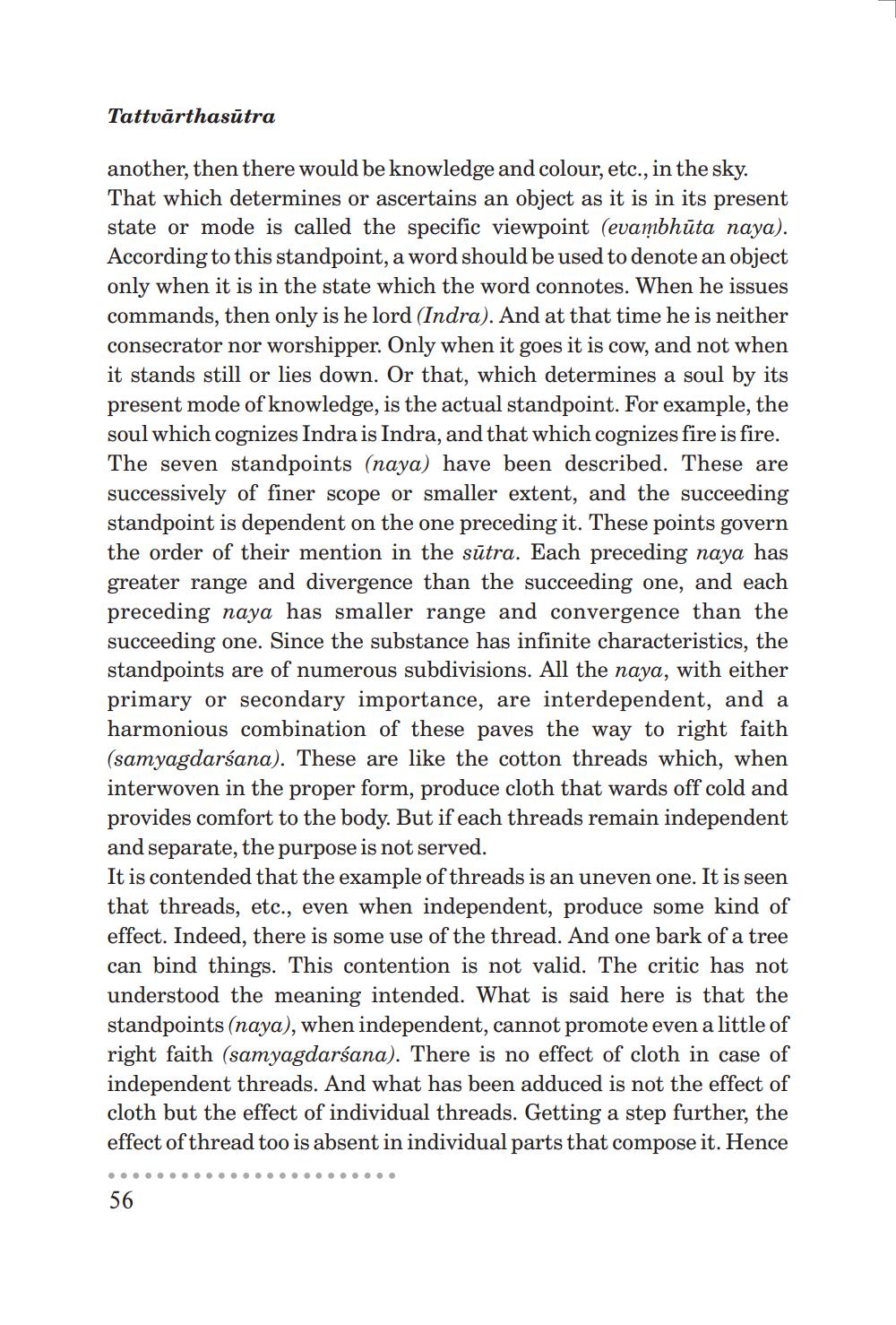________________
Tattvärthasūtra
another, then there would be knowledge and colour, etc., in the sky. That which determines or ascertains an object as it is in its present state or mode is called the specific viewpoint (evambhūta naya). According to this standpoint, a word should be used to denote an object only when it is in the state which the word connotes. When he issues commands, then only is he lord (Indra). And at that time he is neither consecrator nor worshipper. Only when it goes it is cow, and not when it stands still or lies down. Or that, which determines a soul by its present mode of knowledge, is the actual standpoint. For example, the soul which cognizes Indra is Indra, and that which cognizes fire is fire. The seven standpoints (naya) have been described. These are successively of finer scope or smaller extent, and the succeeding standpoint is dependent on the one preceding it. These points govern the order of their mention in the sutra. Each preceding naya has greater range and divergence than the succeeding one, and each preceding naya has smaller range and convergence than the succeeding one. Since the substance has infinite characteristics, the standpoints are of numerous subdivisions. All the naya, with either primary or secondary importance, are interdependent, and a harmonious combination of these paves the way to right faith (samyagdarśana). These are like the cotton threads which, when interwoven in the proper form, produce cloth that wards off cold and provides comfort to the body. But if each threads remain independent and separate, the purpose is not served.
It is contended that the example of threads is an uneven one. It is seen that threads, etc., even when independent, produce some kind of effect. Indeed, there is some use of the thread. And one bark of a tree can bind things. This contention is not valid. The critic has not understood the meaning intended. What is said here is that the standpoints (naya), when independent, cannot promote even a little of right faith (samyagdarśana). There is no effect of cloth in case of independent threads. And what has been adduced is not the effect of cloth but the effect of individual threads. Getting a step further, the effect of thread too is absent in individual parts that compose it. Hence
56
.......




